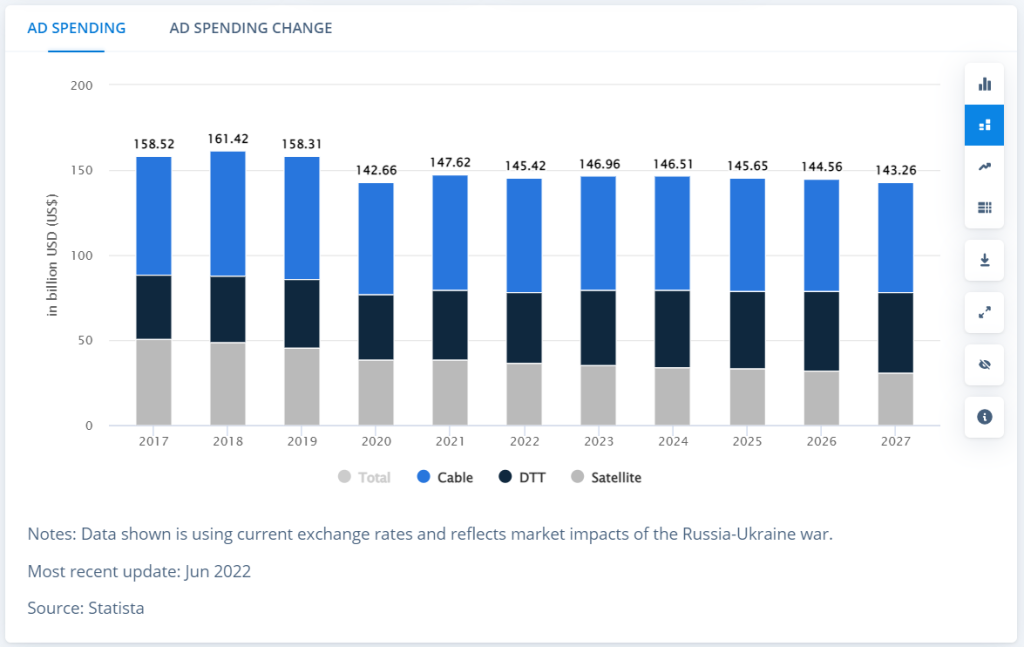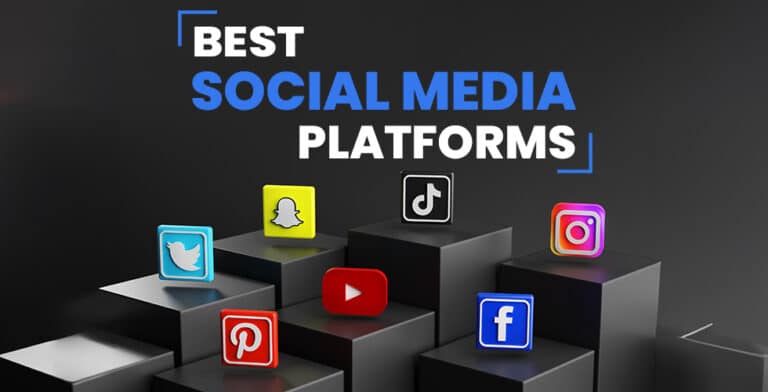With the rise of social media, influencer marketing has become an invaluable tool for businesses to reach their target audience. Influencers are people who have established a strong presence on social media and can influence their followers to take the desired action. It has become increasingly popular as a way to boost brand awareness and engage customers. Due to this, various traditional marketing mediums like newspaper and TV advertising are slowly fading away as Gen Z are more into their smartphones than TV channels.
The global influencer market size has been growing at a rate of 3.35 percent over the past three years. On the other hand, global ad spending on traditional TV advertising has dropped by almost 10 percent (9.88%) during the first COVID-19 pandemic lockdown in 2020. Although it did increase by 3.5 percent by 2021, it again dropped by 1.42 percent and reached 145.42 billion in 2022. Since spending on traditional spending is seeing declines, is traditional marketing going to be replaced by other means of marketing like influencer marketing?
Traditional Marketing: Classic Mass-Media Promotion
Traditional marketing refers to the use of traditional mediums such as television, radio, newspapers, magazines, billboards and direct mail to promote products or services. It is an older method of marketing, where the aim is to reach a large audience pool through mass media. The goal of traditional marketing is to increase brand awareness and drive sales by creating a wide-reaching message that appeals to as many people as possible. Traditional marketing methods have been in use for many years and have been proven to be effective, but in recent times it is becoming less effective compared to digital marketing methods like influencer marketing.

Despite the increasing popularity of various digital marketing tactics, traditional marketing still has its advantages. Traditional marketing includes advertising in print, radio, television, and other physical platforms. It allows businesses to reach a large, diverse audience and helps to establish brands presence in the marketplace. Not only that, traditional marketing also allows businesses to control the message they are sending out to their target audience. This is important as it allows businesses to ensure that their message is consistent and is tailored for the right audience.
However, traditional marketing has its own sets of challenges. One of the main challenges is that it can be costly for small businesses. Additionally, it can be hard to measure the effectiveness of traditional marketing methods, making it difficult to determine the return of investment, reach and impressions. The audience also has limited ways to interact or engage with the advertisement, making it hard to track their engagement. Another challenge is that traditional marketing methods can be less targeted than digital methods, making it harder to reach specific demographics or audiences. Lastly, with the rise of various digital marketing styles, traditional marketing methods may not be as effective as they once were, as more and more people are turning to the internet for information and entertainment.
Influencer Marketing: Marketing Brands Through Popularity
Influencer marketing is a form of marketing where brands partner with popular social media personalities, known as influencers and ask them to promote their products or services. Influencers have a huge fan following and businesses aim to reach the audience of that influencer to increase brand awareness and drive sales. Influencer marketing often focuses on specific niche markets, allowing brands to target specific demographics and build relationships with their customers. The influencer promotes the brand’s products or services on their social media platforms, such as Instagram, TikTok, YouTube, or Twitter, using sponsored posts, stories, or videos.
Influencer marketing has many benefits over traditional marketing. It is more cost effective and can help businesses reach a wider, more targeted audience. It also allows businesses to create an authentic connection with their audience as influencers can act as ambassadors of the brand. Furthermore, influencers have the ability to create content that resonates with their followers, helping businesses to create a loyal customer base. Additionally, influencer marketing can help businesses to build trust and credibility with their target audience. Influencers have already established relationships with their followers, so when they promote a product or service, their followers are more likely to trust the recommendation. This can help businesses to increase their sales and grow their customer base.
Though influencer marketing has many benefits, it also has its challenges. It can be difficult to vet influencers and ensure that they are being honest and transparent about their relationship with brands. Businesses must also ensure that the influencers’ followers are genuine and not paid or fake accounts. Furthermore, as social media changes constantly, businesses must be agile and adjust their strategy accordingly. Additionally, influencer marketing can be expensive, as influencers often charge a fee for their service. It can also be difficult to measure the success of an influencer campaign, as it is hard to track the ROI of influencer marketing. Finally, businesses must be aware of the Federal Trade Commission’s (FTC) guideline for influencer marketing, as failure to comply can result in hefty fines.

How Effective Is Influencer Marketing Than Traditional Marketing
Influencer marketing can be highly effective because influencers have built a relationship of trust with their followers. When an influencer endorses a product or service, their followers are more likely to trust their recommendation and take action. Moreover, influencer marketing allows businesses to target specific demographics and niche audiences. On the other hand, traditional marketing methods such as television and radio ads, billboards and print media can reach a large audience. They also tend to be seen as more reliable and trustworthy by consumers.
In terms of effectiveness, it depends on the campaign’s objectives, target audience, and the industry. Both marketing methods have their own effectiveness. But it’s important to note that the world is moving towards digital media and influencer marketing is a part of the trend, and it’s more effective in reaching audiences through social media platforms where people spend more time. Moreover, influencer marketing allows for better tracking and measurement of results, which can give insights on how to improve future campaigns.
How To Measure Success For Influencer And Traditional Marketing
Success for influencer marketing can be measured in a variety of ways, including engagement rate (likes, comments, shares), reach (the number of people who see the post), and conversion rate (the number of people who make a purchase or take some other desired action as a result of the post). Additionally, return on investment (ROI) can be calculated by dividing the revenue generated by the campaign by the cost of the campaign. A study by marketing professionals at Tomoson found that influencer marketing campaigns have an average ROI of $6.50 for every $1 spent. Although influencer marketing was once considered as just a niche marketing strategy, it has now become so prominent that more than 90 percent of marketers are using it to promote various products and services.
On the other hand, the success of traditional marketing can also be measured through brand awareness (the number of people who are aware of the brand), sales or revenue generated, and customer satisfaction. ROI can also be calculated for traditional marketing campaigns. According to a report by Statista, in 2022, average advertising spending on digital marketing in the US market rose by 15 percent, where it dropped to -1.7 percent for traditional marketing. This report also shows that the spending on traditional advertisement in the US market has been in the negative for the past ten years. This goes to show that although traditional marketing has been relevant for a long time, those days have now changed and new marketing strategies have taken its place. At present, businesses are not restricted by specific regions or communities. Rather, because of Web 3.0, most businesses are being shifted online and operating at a global scale. As a result, this has led to influencer marketing becoming more popular each day.

Can Influencer Marketing Replace Traditional Marketing?
In the decision between influencer and traditional marketing, there is no universal solution that is superior to the other. Both approaches have their own unique benefits and drawbacks that must be carefully evaluated prior to making a choice. It is important to note that influencer marketing is merely a component of digital marketing, and should not be pitted against traditional marketing as a standalone entity. Digital marketing has established itself as a powerful tool in the marketing arena over the past decade, providing significant advantages to businesses globally. Thus, it is digital marketing as a whole that presents a challenge to traditional marketing, rather than just influencer marketing. Ultimately, businesses should consider utilizing both influencer and traditional marketing strategies in conjunction to attain optimal results and reach a wider target audience.





